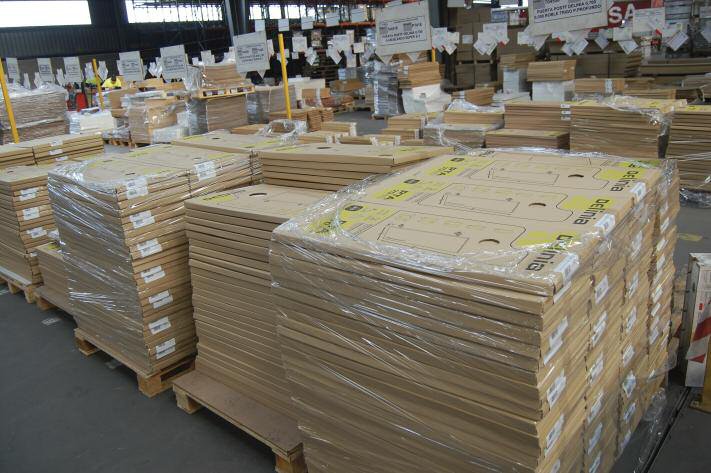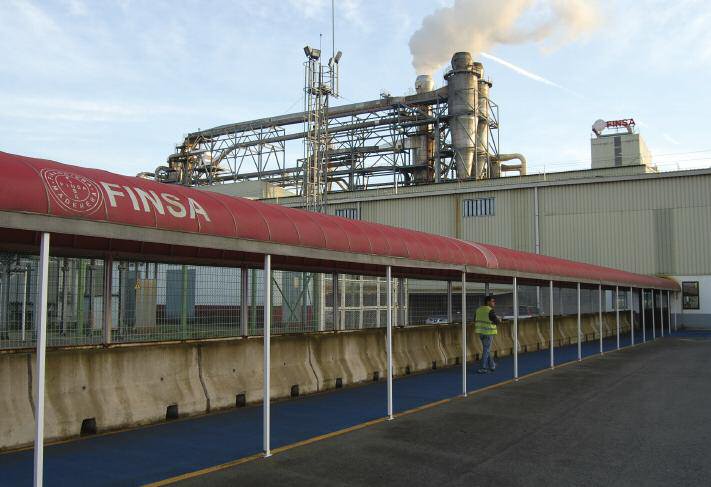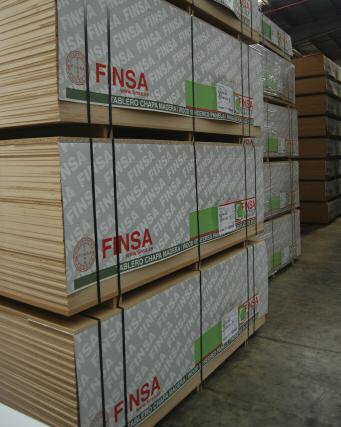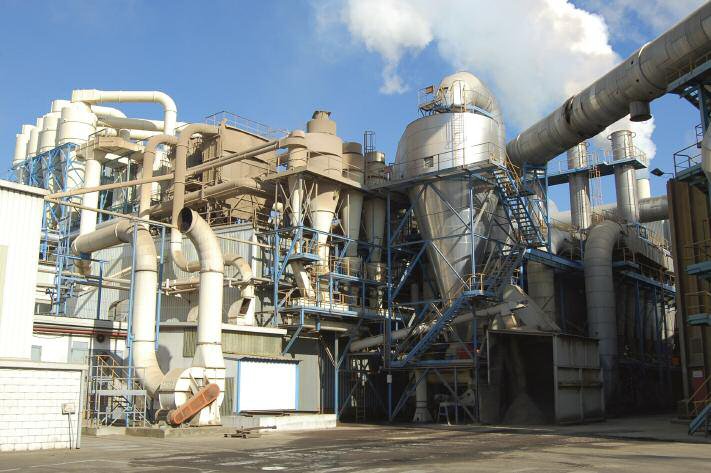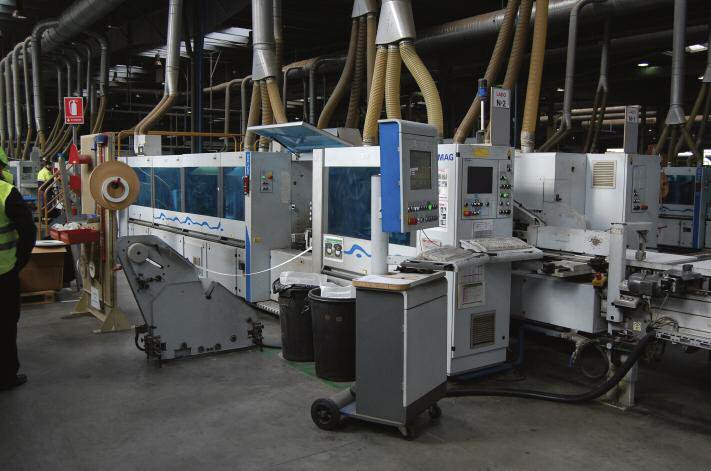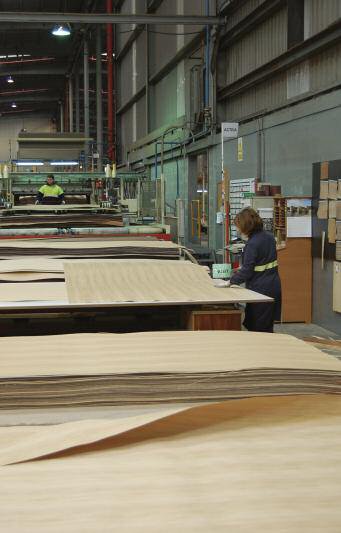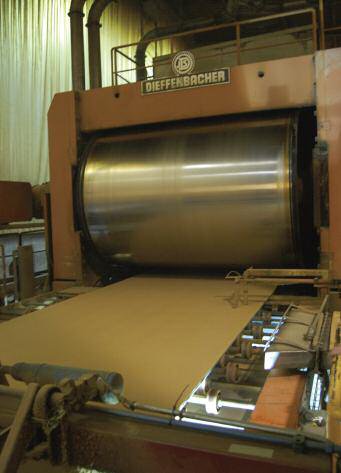A wide range of products to beat the credit crunch
20 May 2011Visiting Santiago de compostela in northwest Spain is like taking a step back in history.
The city, the capital of the celtic region of Galicia, is one of the three most sacred places in Catholicism due to its iconic, soaring cathedral being the reputed resting place of St James the apostle.
Every year, crowds of bustling pilgrims make their way along the Camino de Santiago – ‘The way of St James’ – to the medieval city.
Amid this tourist hub and history is the headquarters for Spain’s (and one of the world’s) largest wood based panel producers, Finsa, which has six plants in the province.
From its humble beginnings in 1931 as a sawmill near Santiago, Finsa has grown steadily, adding particleboard production in 1965, MDF, MFC (melamine faced particleboard and MDF) and glue in the 1980s, veneered boards in the 1990s and other products since then.
The acquisition of outstanding shares in Spanish panel manufacturing joint venture Utisa two years ago increased the size of the company considerably and it now has operations in nine countries, with 22 production plants employing 4,319 people.
Last year it sold 2.2 million m3 of products worth €837m (2009, 2.0 million m3/€824m), down from a 2007 peak of €1.2bn and 3.42 million m3.
The figures show Finsa’s performance improved last year but the reduction in sales and production output from the 2007 peak is symptomatic of the turbulent times affecting European panel manufacturing in recent years due to reduced demand, over-capacity, raw material and energy price increases and the threat of alternative use of the timber (biomass).
“In the last two years we have adjusted our production capacity in line with market demand for our products and as a result we decommissioned some of our old production lines,said Finsa UK managing director Rafael Willisch.
“The result of this rationalisation was a reduction in the manufacture of products considered commodities, with very low prices and negative margins,he said.
Finsa has adopted Kaizen methodology to improve manufacturing, engineering, management processes, logistics, product development and marketing.
Value-added production and integrated processing have become more important, with a raft of new product developments, including lightweight and speciality boards such as SuperPan (wood chip core and MDF surfaces) and GreenPanel: MDF top and bottom surfaces and a thin MDF grid core.
At the expansive Santiago plant, the largest factory in the group at 2.2 million ft2 and 700 staff, it’s easy to get an appreciation of this expansion into value-added products.
At one end of the spectrum there is manufacture of volume commodity particleboard panels on a 38.5m long Siempelkamp ContiRoll press producing 6-40mm thick boards. Then there is the MFC operation, with six different presses, the last one a 2200mm x 5800mm Siempelkamp unit installed five years ago and designed for very flexible operation.
A short walk from these operations into another vast building reveals a huge downstream processing operation where the panels are cut to size on Holzma technology then machined and edged into a variety of processed or semi-processed furniture components for professional and DIY trades.
Products include edged panels, machined boards, postformed doors, worktops, kitchen carcasses and flat-pack furniture kits – produced on an army of Homag technology, including five edging lines with two-and four-sided capabilities. Profiline, Optimat and Weeke machines sit alongside Bargstedt handling technology.
Finsa also operates a full-blown sawmill on site, again with extensive downstream operations, delivering solid wood products.
Local maritime pine logs are sawn on a Ciris sawmill line, producing a range of sawn and treated products for the construction, garden and packaging sectors.
Weinig machining centres process wood for applications including wine boxes, shuttering, cladding, decorative fencing, decking and planters. Even laminating is carried out for some products.
With this extent and scale of manufacturing capabilities, it’s perhaps surprising that the Finsa brand has not been of bigger prominence, especially in the UK, which is regarded as a strategic market by Finsa.
This, Mr Willisch says, is something the company is looking to change with a new brand awareness drive.
Liverpool-based Finsa UK, operating since 1978, has been busy securing new distribution agreements, sponsored a design competition and attended the Ecobuild show in London. A new website will go live soon.
“In all these years we have moved from being a supplier of a limited range of commodity items to our position now as a leading manufacturer supplying the widest range of MDF in the market, from 1.8 to 70mm,said Mr Willisch.
Last year the lightweight range was launched in co-operation with UK distributors IDS, James Latham and Arnold Laver.
Three new products profiled in the furniture trade included Compacmel – an alternative to solid laminate which is basically a fibreboard panel with a density of over 1,000kg/m3, Fibracolor – through-coloured MDF – and SuperPan Decor, a product which Finsa has patented.
“During 2011 we will launch new products which we are working on at present and we will increase our profile in the timber and furniture trade press with the presentation of our new website as well as a new agreement with leading distributors throughout the UK for the distribution of the new Superpan Decor,said Mr Willisch.
At the Ecobuild exhibition in the UK, Finsa promoted the lightweight panels range and the stand featured the winning project of its design competition with the School of Architecture of the John Moores University, Liverpool – an illuminated staircase storage solution made from GreenPanel.
“Not many of our customers are aware of this but Finsa is a leading supplier of laminate flooring in the UK and we are very proud of being one of the top suppliers to B&Q and Howdens Joinery through our Faus Floor brand,he added.
“This part of our business has been strengthened lately with new personnel with the view of promoting our Faus brand to many other customers in the UK. We are in the process of expanding the network of distributors throughout the UK.”
All this forward momentum feels significant for a private, family company which has kept a lower profile than many of its competitors over the years.
Finsa still retains that family-feel and the majority of the company’s shares are still owned by the original family, which takes an active interest in the business.
A short drive away from Santiago brings you to where it all began for Finsa – the site of the original 1930s sawmill at Padrón.
Today there is no sawn timber production, but the site has grown massively to encompass an MDF and veneered board hub of some considerable scale on the banks of the River Ulla.
Finsa stopped cutting logs in the veneer mill a year ago. It now finds it more cost-effective to buy in the veneers and then classify them before cutting, gluing, edging and stitching them together on several Fisher+Rückle machines.
Three lines produce 25,000m3 of veneered board every year, with operations currently running at 60% capacity. Total group production is 150,000m3.
Veneers being applied during TTJ’s visit included sapele, European white oak, American white oak and wenge.
Substrates include particleboard, MDF, plywood and blockboard – with veneers being applied on a 130cm-wide press beforebeing cut to size and sanded on Egurko and Heesemann technology to create the Natur range of veneered boards.
Boards at the Padrón factory are produced in 2-55mm thicknesses, though the Portuguese plant, a more flexible operation, can manufacture 250cm-wide boards.
The adjacent MDF plant, like the particleboard plant in Santiago, sources its raw material from the maritime pine and eucalyptus forests covering Galicia. About 80% of forests in the province are made up of these two species, which Finsa says gives it a better quality board than using spruce.
Many of the newer Finsa MDF innovations focus on lighter boards which consume less raw material, are easier to transport and easier to handle.
FinLight, which consists of two thin Fibranor MDF faces with a 300kg/m3 low-density MDF filling (Iberpan 300), was included in the resource efficiency category of the 2010 edition of the Construction Products Innovation and Achievement guide. Applications include interior doors, furniture, worktops, kitchen door fronts, screens and wall panelling.
SuperPan combines a particleboard core with two MDF faces. It can also be used in engineered flooring, postforming and structural elements.
The GreenPanel ultralight board further reduces raw material usage with its MDF top and bottom surfaces and thinner MDF grid core. It can be made in 28 to 100mm thicknesses, with a density as low as 160kg/m3 at 100mm thickness.
Suspended ceilings, partitions and furniture are typical end-use applications.
What is clear from visiting Finsa is that the company has a broad product portfolio with an increasing emphasis on added-value.
Other areas include its South African plywood production operation and the decorative paper business Decotec.
All in all, it looks as if Finsa is positioning itself well to compete in the post credit-crunch world.
